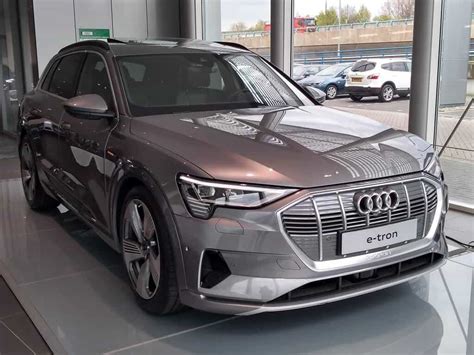Uncover The Ultimate Tanks: A Perfect Guide

In the world of military history and strategy, tanks have played a pivotal role, shaping the outcome of battles and wars. The evolution of these mighty machines has been nothing short of extraordinary, and today, we delve into the ultimate guide to tanks, exploring their history, significance, and the remarkable models that have left an indelible mark on the battlefield.
The Rise of Tanks: A Revolutionary Era

The early 20th century witnessed a revolution in military tactics with the introduction of tanks. These armored vehicles, designed to provide mobile firepower and protection, changed the dynamics of warfare forever. The first tanks, developed during World War I, were a response to the stalemate of trench warfare, offering a new dimension to combat.
The British Mark I tank, often regarded as the pioneer of modern tanks, made its debut in 1916. With its caterpillar tracks and armor plating, it could traverse rugged terrain and withstand enemy fire. This innovation marked a turning point, signaling the birth of a new era in military technology.
Evolution of Tank Design: A Journey Through Time
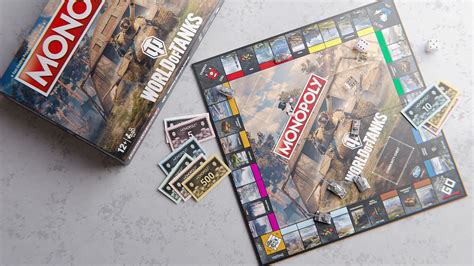
Over the decades, tank design has evolved, adapting to the changing nature of warfare. From the early days of slow-moving behemoths to the sleek and agile machines of today, tanks have undergone a remarkable transformation.
World War II: The Golden Age of Tanks
World War II saw the pinnacle of tank warfare, with iconic models such as the German Panzer, the Soviet T-34, and the American Sherman. These tanks, characterized by their powerful engines, advanced armor, and deadly firepower, dominated the battlefields. The strategic use of tanks, coupled with innovative tactics, played a crucial role in shaping the outcome of the war.
During this period, tank design focused on speed, maneuverability, and firepower. The introduction of sloped armor, improved suspension systems, and more efficient engines revolutionized tank warfare. The German Panther, with its exceptional mobility and firepower, became a symbol of German engineering prowess.
Cold War: The Arms Race
The Cold War era witnessed a fierce arms race, with superpowers striving to develop the most advanced tank technology. The Soviet T-72 and the American M1 Abrams emerged as iconic tanks of this period. These tanks incorporated cutting-edge technology, including composite armor, advanced fire control systems, and powerful engines.
The M1 Abrams, with its exceptional mobility and lethal firepower, became a cornerstone of the US Army's armored forces. Its ability to engage and destroy enemy tanks at long ranges made it a formidable force on the battlefield.
Modern Tanks: Precision and Technology
In the modern era, tanks have become even more advanced, incorporating precision-guided munitions, advanced optics, and digital communication systems. These tanks are designed to operate in diverse environments, from urban warfare to desert battles.
The British Challenger 2 and the Israeli Merkava are prime examples of modern tank design. With their advanced armor protection, powerful engines, and state-of-the-art fire control systems, they represent the pinnacle of tank technology.
Key Components of a Tank: Unveiling the Secrets
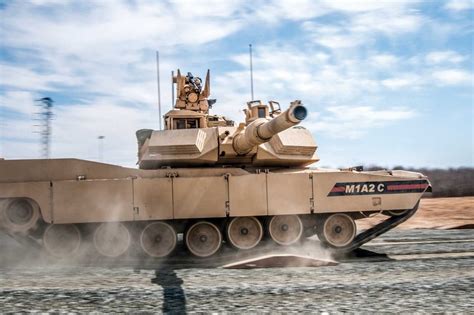
Understanding the inner workings of a tank is essential to appreciate its capabilities. Here's a glimpse into the key components that make a tank a formidable force:
Armor
Tank armor is designed to provide protection against enemy fire. Modern tanks utilize advanced composite armor, often made of a combination of metals, ceramics, and polymers. This armor can withstand high-velocity rounds and explosive devices, ensuring the safety of the crew.
Firepower
Tanks are equipped with powerful weapons, primarily main battle tanks (MBTs). These tanks can carry a variety of ammunition, including armor-piercing rounds, high-explosive anti-tank (HEAT) rounds, and precision-guided missiles. The firepower of a tank allows it to engage and destroy enemy targets with deadly accuracy.
Mobility
Mobility is a critical aspect of tank warfare. Modern tanks are designed to be highly mobile, with powerful engines and advanced suspension systems. They can traverse various terrains, from muddy fields to mountainous regions, ensuring their effectiveness in diverse combat scenarios.
Communication and Sensors
Effective communication and advanced sensors are vital for tank operations. Modern tanks are equipped with sophisticated communication systems, allowing them to coordinate with other units and receive real-time intelligence. Additionally, advanced sensors, such as thermal imaging and laser range finders, enhance the tank's ability to detect and engage targets.
The Role of Tanks in Modern Warfare

In today's complex battlefield, tanks continue to play a crucial role. Their versatility and firepower make them an essential asset in both offensive and defensive operations.
Offensive Operations
Tanks are a formidable force in offensive operations, providing the necessary firepower and mobility to breach enemy defenses. They can lead the charge, engaging and destroying enemy targets, while also providing support to infantry units.
Defensive Operations
In defensive operations, tanks act as a deterrent, protecting vital assets and infrastructure. Their presence can deter enemy advances and provide a strong defensive line. Additionally, tanks can engage and destroy enemy vehicles, ensuring the security of friendly forces.
Urban Warfare
The modern urban battlefield presents unique challenges. Tanks, with their powerful weapons and protection, are well-suited for urban combat. They can engage enemy positions from a distance, minimizing risk to friendly forces. Additionally, their mobility allows them to navigate through urban environments, providing a strategic advantage.
Comparing Tank Models: A Comprehensive Overview
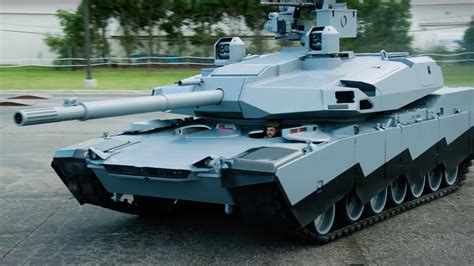
The world of tanks is diverse, with numerous models and variations. Here's a comparison of some of the most iconic tanks, highlighting their key features and capabilities:
German Panther
- Key Features: Exceptional mobility, powerful 75mm gun, sloped armor.
- Role: Medium tank, designed for rapid maneuverability and deadly firepower.
- Significance: Played a crucial role in German armored divisions, known for its speed and accuracy.
Soviet T-34
- Key Features: Versatile design, reliable engine, effective 76mm gun.
- Role: Medium tank, widely used by Soviet forces during World War II.
- Significance: Known for its simplicity, durability, and effectiveness in various combat scenarios.
American Sherman
- Key Features: Reliable engine, 75mm gun, good cross-country performance.
- Role: Medium tank, used extensively by Allied forces during World War II.
- Significance: Played a crucial role in the liberation of Europe, known for its versatility and dependability.
M1 Abrams
- Key Features: Advanced composite armor, powerful 120mm gun, exceptional mobility.
- Role: Main battle tank, serving as the backbone of the US Army's armored forces.
- Significance: Known for its lethal firepower and ability to engage targets at long ranges, a symbol of American military might.
British Challenger 2
- Key Features: Advanced Chobham armor, 120mm gun, excellent off-road performance.
- Role: Main battle tank, designed for maximum protection and firepower.
- Significance: One of the most heavily armored tanks in service, known for its reliability and effectiveness in modern warfare.
The Future of Tank Warfare: Emerging Trends
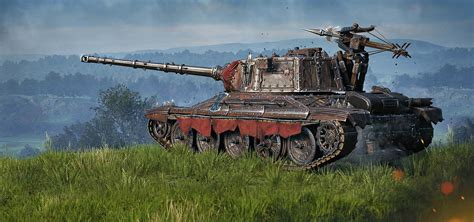
As technology continues to advance, the future of tank warfare holds exciting possibilities. Here are some emerging trends that are shaping the next generation of tanks:
Autonomous Systems
The integration of autonomous systems is revolutionizing tank warfare. Unmanned tanks, equipped with advanced AI and sensors, can operate independently, reducing the risk to human lives. These tanks can perform reconnaissance missions, engage targets, and provide valuable intelligence to commanders.
Hybrid and Electric Powertrains
The development of hybrid and electric powertrains is gaining momentum in tank design. These systems offer improved fuel efficiency, reduced noise signatures, and enhanced mobility. With quieter and more efficient engines, tanks can operate more discreetly, increasing their effectiveness on the battlefield.
Advanced Materials and Armor
Research into advanced materials is pushing the boundaries of tank armor. New composite materials, nanomaterials, and innovative designs are being explored to enhance protection against modern threats. These advancements aim to provide better protection while maintaining mobility and agility.
Precision-Guided Munitions
The integration of precision-guided munitions is transforming tank warfare. These advanced weapons, equipped with advanced guidance systems, can engage targets with pinpoint accuracy. This capability reduces collateral damage and enhances the effectiveness of tank-based firepower.
Training and Simulation: Mastering the Art of Tank Warfare
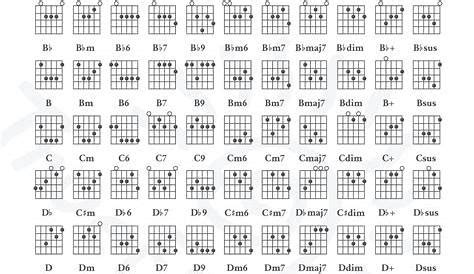
Training and simulation play a crucial role in preparing tank crews for the complexities of modern warfare. Here's an overview of the training process and the importance of simulation:
Training Curriculum
- Basic Tank Operations: Crew members learn the fundamentals of tank operation, including driving, firing weapons, and maintaining the vehicle.
- Tactical Training: Tank crews undergo rigorous tactical training, learning to navigate various combat scenarios, engage targets, and coordinate with other units.
- Firepower and Accuracy: Training focuses on developing marksmanship skills, ensuring tank crews can engage targets with precision and accuracy.
Importance of Simulation
Simulation plays a vital role in tank training, providing a safe and controlled environment for crews to practice their skills. Advanced simulation systems, such as virtual reality and computer-based training, allow tank crews to experience realistic combat scenarios without the risks associated with live fire exercises.
Through simulation, tank crews can refine their tactics, improve their decision-making skills, and enhance their overall performance. It also allows for the evaluation of tank designs and the identification of areas for improvement, ensuring that tanks are ready for the challenges of modern warfare.
The Ultimate Tanks: A Summary

Tanks have evolved from their early beginnings as slow-moving armored vehicles to become the ultimate machines of modern warfare. Their impact on the battlefield is undeniable, and their role in shaping military history cannot be overstated. From the iconic tanks of World War II to the advanced models of today, tanks continue to inspire awe and respect.
As we conclude our journey through the world of tanks, we hope you've gained a deeper understanding of these mighty machines. Whether it's the precision of the M1 Abrams or the versatility of the T-34, tanks have left an indelible mark on the annals of military history. Join us as we continue to explore the fascinating world of military technology and strategy.
What is the primary role of tanks in modern warfare?
+Tanks serve as a formidable force in both offensive and defensive operations. They provide the necessary firepower and mobility to breach enemy defenses and protect friendly forces. Their versatility makes them an essential asset on the modern battlefield.
How has tank design evolved over time?
+Tank design has evolved from slow-moving behemoths to agile and advanced machines. The focus has shifted from sheer firepower to precision and technology. Modern tanks incorporate advanced armor, powerful engines, and precision-guided munitions, making them highly effective in diverse combat scenarios.
What are some emerging trends in tank warfare?
+Emerging trends in tank warfare include the integration of autonomous systems, hybrid and electric powertrains, advanced materials for armor, and precision-guided munitions. These advancements aim to enhance the capabilities of tanks, improve their performance, and reduce risks to human lives.
How important is training and simulation in tank warfare?
+Training and simulation are crucial in preparing tank crews for the complexities of modern warfare. Simulation provides a safe and controlled environment for crews to practice their skills, refine tactics, and enhance their overall performance. It also allows for the evaluation of tank designs and the identification of areas for improvement.
